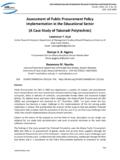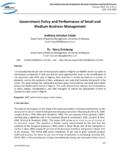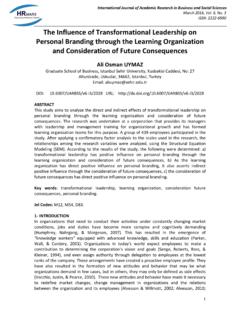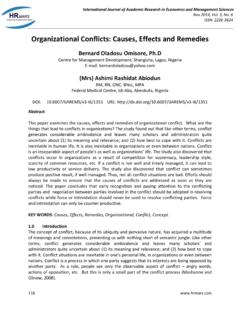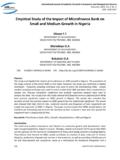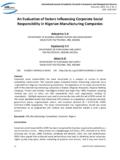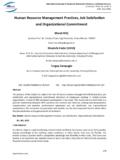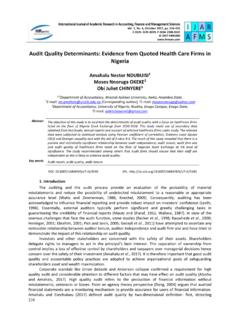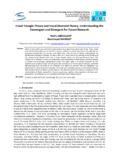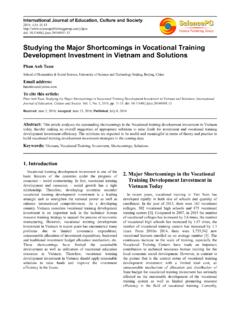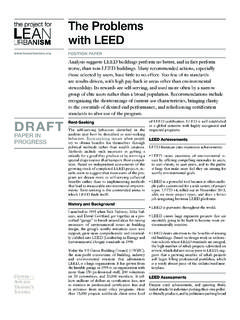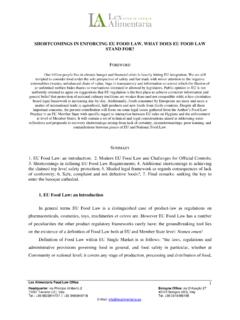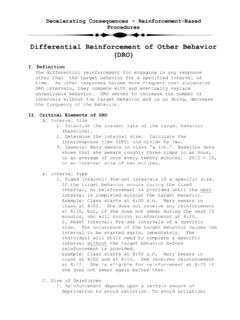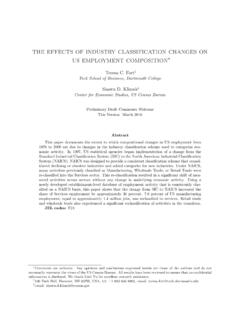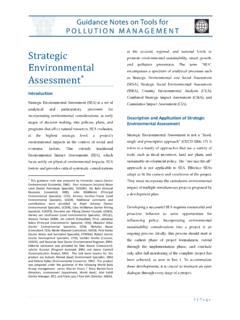Transcription of Technical Shortcomings of Designing and Implementing a ...
1 International Journal of Academic Research in Business and Social Sciences January 2014, Vol. 4, No. 1 ISSN: 2222-6990 658 IJARBSS Impact Factor: (Allocated by Global Impact Factor, Australia) Technical Shortcomings of Designing and Implementing a knowledge management system Mohammadreza Hamidizadeh Professor of Business Administration Department, Shahid Beheshti University, Tehran, Iran Seyed Akbar Nilipour Tabatabaei Assistant Professor, Shakhespajouh Research Institute, Isfahan, Iran Maryam Gholizadeh Candidate of Human Resources management , Shakhespajouh Research Institute, Isfahan, Iran DOI: URL: Abstract The purpose of the current research is to recognize Technical Shortcomings of Designing and Implementing a knowledge management system .
2 The research population include two companies: Zobahan Esfahan Company and International Automation and Systems Engineering Company (IRISA) in which the staffs work in different departments such as research and development, method and structure, strategic planning, instruction, and information technology. applying a stratified random sampling, 50 samples were selected from totally 5560 ones. The questionnaire is consisted of two parts of demographics data and Technical data which are based on the research model. This research will answer the question: "what is the influence of knowledge quality, system quality, and services quality on Designing and implementation of a knowledge management system ".
3 The research hypotheses include triple areas of pathology ( knowledge , system , and services) and its fourteen components which have been analyzed separately. Results of statistical tests show that a total average is high enough, a standard deviation is suitable, and a skewness is positive. Therefore, pathology is a little bit more than average. Generally, system s pathology and services pathology are higher than average, however, knowledge s pathology is lower than average. Applying a Friedman s test, it was concluded that 14 components of pathology do not have an equal importance in establishing a knowledge management . Three areas of pathology ( knowledge , system , and services) did not have an equal importance in design and establishment of a knowledge management system .
4 All of suspected to be effective variables were entered into the model simultaneously, however, only gender and familiarity with knowledge management variables were recognized to be effective. Keywords: knowledge management system , knowledge quality, system quality, Services quality International Journal of Academic Research in Business and Social Sciences January 2014, Vol. 4, No. 1 ISSN: 2222-6990 659 IJARBSS Impact Factor: (Allocated by Global Impact Factor, Australia) 1. Introduction Identifying and diagnosing the problems existing in industrial units is crucial for them to improve. There are different solutions to improve and renovate an industrial unit. Identifying suitable solutions requires to recognize the problem which would be solved by each solution.
5 Therefore, it is necessary to diagnose problems and restrictions of industrial units correctly and scientifically in order to improve, grow, and increase their competitiveness. Pathology (fault finding) is a solution for this primary and fundamental need and precedes any improvement activities in an organization. Recognizing the current situation of industrial units in order to find their problems and restrictions, determining their strengths and weaknesses, recommending general solutions to solve the problems, and improving their conditions are important activities for pathology (Neville,1994). The aim of this research is to find Technical Shortcomings of establishing of a knowledge management system .
6 In a research performed by Hamidizadeh (Hamidizadeh,2005), advantages of knowledge for an organization have been studied which include improved decision-making, increased responsiveness, increased responsibility, efficiency, innovation, flexibility, improved quality, decreased duplication, and empowerment.(Latifi et al ,2012) state that a key strategic decision for knowledge management is deciding those activities that an organization should carry out by paying attention to its physical characteristics and its perceptual characteristics. In another study, (Ming-Kuen et al,2010) concluded that 49% of companies will have a knowledge management system until the next four years, 21% will have it until the next year, 28% have had this system before, and only 2% will not invest on knowledge management .
7 (Hamidizadeh et al ,2012) studied the influence of direct organizational factors, indirect knowledge citizens, and environmental factors on knowledge management in Iran Public Organizations. They studied infrastructures of knowledge management in Iran and stated that the situation is not desirable because there are not any written macro strategies for a knowledge management in organizations. In addition, they stated that most of the studied organizations assign a little budget for information technology, communication, and knowledge management and there are not any clear organizational arrangements for knowledge management in these organizations. They continued that internal mobility of personnel is poor and is based on job necessity purposes rather than for sharing and attracting a knowledge .
8 There is also a little external mobility of personnel in these organizations. (Latifi et al,2011) explained and evaluated the strategies of knowledge creation at universities in Iran. First, he explained the knowledge creation process, evaluated the influencing factors on this process, and identified the current situation of these factors. Then he designed some strategies to lead, mobilize, and empower these factors in order to grow and improve knowledge creation at the universities. His research was performed in two parts of quantitative and qualitative. In a qualitative part, the process of knowledge creation at the universities is explained by studying knowledge creation models, observing related case studies, and analyzing experts viewpoints.
9 Then, using library and field studies, twelve strategic factors that influence the knowledge creation process were identified. In a quantitative part, using a survey method and a questionnaire, the current situation of strategic factors of knowledge creation at the universities was studied. Results show that members of a Delphi Group agreed on 55 strategies of total 57 ones. With regard to results of quantitative and qualitative parts in International Journal of Academic Research in Business and Social Sciences January 2014, Vol. 4, No. 1 ISSN: 2222-6990 660 IJARBSS Impact Factor: (Allocated by Global Impact Factor, Australia) Talebnejad s research, a conceptual model is designed in order to improve the knowledge creation at the studied Universities in Iran.
10 (Latifi et al ,2012) state that scenarios of knowledge management serve multiple functions. First of all, they present a background for the design and selection of strategies. Since no single strategy can be performed best in each scenario, special selection criteria, such as bet on the most probable scenario or preserve flexibility are needed 2. Research Method The research method is descriptive and applied; it seeks to recognize the complications of knowledge management establishment in two companies named Zobahan Esfahan and IRISA. The research population consists of the personnel working in different departments such as research and development, method and structure, strategic planning, instruction, and information technology of Zobahan Esfahan Company and International Automation and Systems Engineering Company (IRISA).
